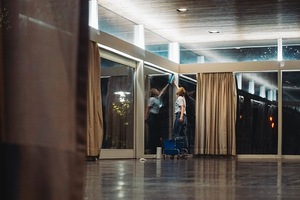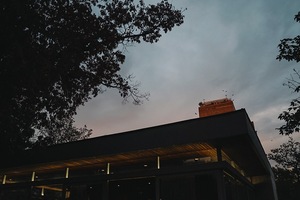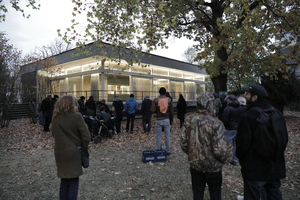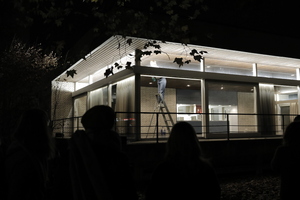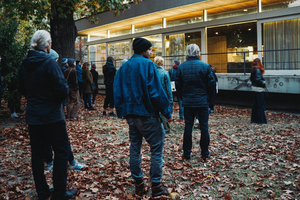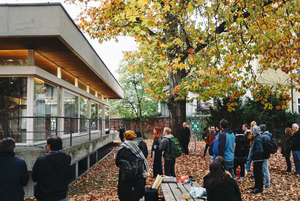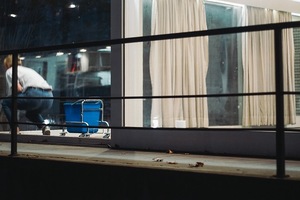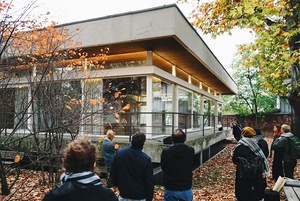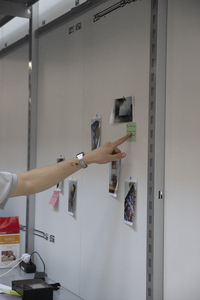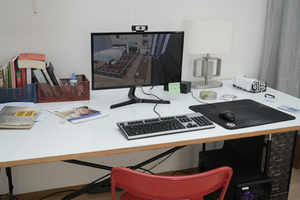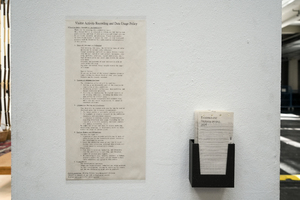Medienobjekt
Alle Inhalte mit Metadaten des Vokabulars "Medienobjekt". Sie sehen nur Inhalte, für die Sie berechtigt sind.
3203 Inhalte
- Seite 1 von 267
Prolog 1 (Pavillon)
- Titel
- Prolog 1 (Pavillon)
- Autor/in
- Titel
- Prolog 1 (Pavillon)
- Urheberrechtshinweis
- © Judith Milz; Cecile Kobel; Valentin Pfister
- Rechtsschutz/Lizenz
- Freigabe Nutzung HfG
- Medienersteller/in
- Beziehung/Funktion
- Projektleiter/in
- Semester
- Studiengang
- Typ der Abschlussarbeit
- Importiert am
- 06.05.2025
- Übergeordnete Sets
- 1
Prolog 1 (Pavillion)
- Titel
- Prolog 1 (Pavillion)
- Autor/in
- Datierung
- 23.10.2018
- Titel
- Prolog 1 (Pavillion)
- Urheberrechtshinweis
- © Judith Milz, Cecile Kobel, Valentin Pfister
- Rechtsschutz/Lizenz
- Freigabe Nutzung HfG
- Medienersteller/in
- Beziehung/Funktion
- Projektleiter/in
- Semester
- Studiengang
- Typ der Abschlussarbeit
- Importiert am
- 30.07.2024
- Übergeordnete Sets
- 1
Prolog 1 (Pavillion)
- Titel
- Prolog 1 (Pavillion)
- Autor/in
- Datierung
- 23.10.2018
- Titel
- Prolog 1 (Pavillion)
- Urheberrechtshinweis
- © Judith Milz, Cecile Kobel, Valentin Pfister
- Rechtsschutz/Lizenz
- Freigabe Nutzung HfG
- Medienersteller/in
- Beziehung/Funktion
- Projektleiter/in
- Semester
- Studiengang
- Typ der Abschlussarbeit
- Importiert am
- 30.07.2024
- Übergeordnete Sets
- 1
Prolog 1 (Pavillon)
- Titel
- Prolog 1 (Pavillon)
- Autor/in
- Titel
- Prolog 1 (Pavillon)
- Urheberrechtshinweis
- © Judith Milz; Alexander Theis
- Rechtsschutz/Lizenz
- Freigabe Nutzung HfG
- Medienersteller/in
- Beziehung/Funktion
- Projektleiter/in
- Semester
- Studiengang
- Typ der Abschlussarbeit
- Importiert am
- 06.05.2025
- Übergeordnete Sets
- 1
Prolog 1 (Pavillon)
- Titel
- Prolog 1 (Pavillon)
- Autor/in
- Titel
- Prolog 1 (Pavillon)
- Urheberrechtshinweis
- © Judith Milz; Alexander Theis
- Rechtsschutz/Lizenz
- Freigabe Nutzung HfG
- Medienersteller/in
- Beziehung/Funktion
- Projektleiter/in
- Semester
- Studiengang
- Typ der Abschlussarbeit
- Importiert am
- 06.05.2025
- Übergeordnete Sets
- 1
Prolog 1 (Pavillon)
- Titel
- Prolog 1 (Pavillon)
- Autor/in
- Titel
- Prolog 1 (Pavillon)
- Urheberrechtshinweis
- © Judith Milz; Cecile Kobel; Valentin Pfister
- Rechtsschutz/Lizenz
- Freigabe Nutzung HfG
- Medienersteller/in
- Beziehung/Funktion
- Projektleiter/in
- Semester
- Studiengang
- Typ der Abschlussarbeit
- Importiert am
- 06.05.2025
- Übergeordnete Sets
- 1
Prolog 1 (Pavillon)
- Titel
- Prolog 1 (Pavillon)
- Autor/in
- Titel
- Prolog 1 (Pavillon)
- Urheberrechtshinweis
- © Judith Milz; Cecile Kobel; Valentin Pfister
- Rechtsschutz/Lizenz
- Freigabe Nutzung HfG
- Medienersteller/in
- Beziehung/Funktion
- Projektleiter/in
- Semester
- Studiengang
- Typ der Abschlussarbeit
- Importiert am
- 06.05.2025
- Übergeordnete Sets
- 1
Prolog 1 (Pavillion)
- Titel
- Prolog 1 (Pavillion)
- Autor/in
- Datierung
- 23.10.2018
- Titel
- Prolog 1 (Pavillion)
- Urheberrechtshinweis
- © Judith Milz, Cecile Kobel, Valentin Pfister
- Rechtsschutz/Lizenz
- Freigabe Nutzung HfG
- Medienersteller/in
- Beziehung/Funktion
- Projektleiter/in
- Semester
- Studiengang
- Typ der Abschlussarbeit
- Importiert am
- 30.07.2024
- Übergeordnete Sets
- 1
Prolog 1 (Pavillion)
- Titel
- Prolog 1 (Pavillion)
- Autor/in
- Datierung
- 23.10.2018
- Titel
- Prolog 1 (Pavillion)
- Urheberrechtshinweis
- © Judith Milz, Cecile Kobel, Valentin Pfister
- Rechtsschutz/Lizenz
- Freigabe Nutzung HfG
- Medienersteller/in
- Beziehung/Funktion
- Projektleiter/in
- Semester
- Studiengang
- Typ der Abschlussarbeit
- Importiert am
- 30.07.2024
- Übergeordnete Sets
- 1
existence.exe
- Titel
- existence.exe
- Autor/in
- Kategorie
- Typ des Projekts/Werks
- Schlagworte
- Datierung
- 14.05.2025
- Titel
- existence.exe
- Urheberrechtshinweis
- © Wei Wang
- Rechtsschutz/Lizenz
- Freigabe Nutzung HfG
- Medienersteller/in
- Beziehung/Funktion
- Projektleiter/in
- Semester
- Studiengang
- Typ der Abschlussarbeit
- Importiert am
- 18.05.2025
- Übergeordnete Sets
- 1
existence.exe
- Titel
- existence.exe
- Autor/in
- Kategorie
- Typ des Projekts/Werks
- Schlagworte
- Datierung
- 14.05.2025
- Titel
- existence.exe
- Urheberrechtshinweis
- © Wei Wang
- Rechtsschutz/Lizenz
- Freigabe Nutzung HfG
- Medienersteller/in
- Beziehung/Funktion
- Projektleiter/in
- Semester
- Studiengang
- Typ der Abschlussarbeit
- Importiert am
- 18.05.2025
- Übergeordnete Sets
- 1
existence.exe
- Titel
- existence.exe
- Autor/in
- Kategorie
- Typ des Projekts/Werks
- Schlagworte
- Datierung
- 14.05.2025
- Titel
- existence.exe
- Urheberrechtshinweis
- © Wei Wang
- Rechtsschutz/Lizenz
- Freigabe Nutzung HfG
- Medienersteller/in
- Beziehung/Funktion
- Projektleiter/in
- Semester
- Studiengang
- Typ der Abschlussarbeit
- Importiert am
- 18.05.2025
- Übergeordnete Sets
- 1

